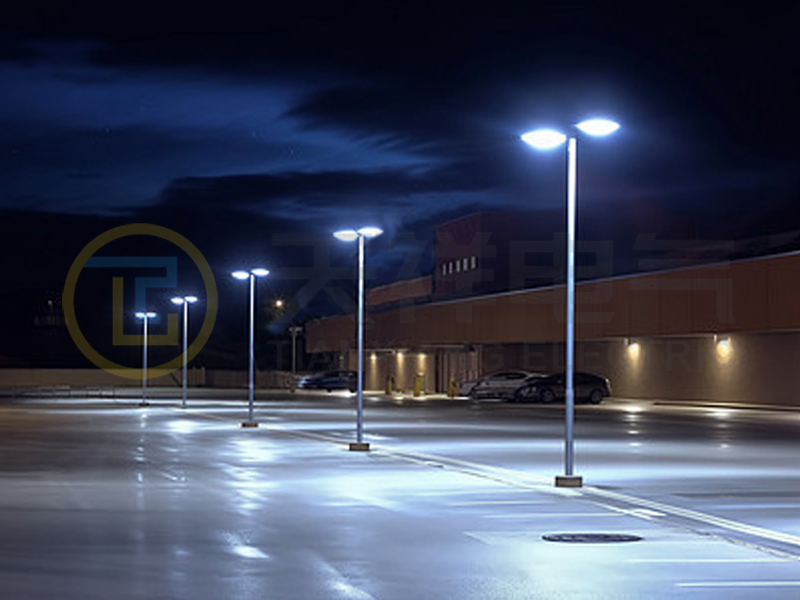Parking lot lighting is an important aspect of urban planning and safety management. Properly lit parking lots not only increase visibility, they also deter crime and provide users with a sense of security. However, the effectiveness of parking lot lighting depends largely on how these lights are controlled. In this article, we’ll explore the various methods and technologies used to control parking lot lights, ensuring they meet safety standards while optimizing energy efficiency.
Importance of Parking Lot Lighting
Before delving into the control mechanisms, it is necessary to understand why parking lot lighting is crucial. Well-lit parking lots improve visibility and make it easier for drivers and pedestrians to navigate. They can also reduce the risk of accidents and enhance safety by deterring criminal activity. Additionally, effective lighting can improve the overall aesthetics of your hotel, making it more attractive to customers and visitors.
Traditional control method
Historically, parking lot lights were controlled using simple switches or timers. While effective, these methods often lead to inefficiencies. For example, lights may remain on during the day, wasting energy and increasing operating costs. The timer may also be set incorrectly, causing the lights to turn off too early or too late.
Manual control
In some cases, parking lot lights are manually controlled by facility managers. This approach allows for immediate adjustments based on specific needs, such as incidents or maintenance activities. However, manual controls are labor-intensive and can result in inconsistent lighting levels, especially in larger facilities.
Photocell
Photocells are devices that automatically turn lights on or off based on ambient light levels. When the sun sets and night falls, the photocell detects this change and activates the light. Instead, the photocell will turn off the light as dawn approaches. This method is more efficient than manual control, but can still result in wasted energy if the photocell is not calibrated correctly or if obstacles block sunlight.
Advanced control technology
As technology advances, more complex control systems have emerged, increasing the efficiency and flexibility of parking lot lighting management.
Motion sensor
Motion sensors are increasingly being integrated into parking lot lighting systems. These sensors detect movement within designated areas and activate lights only when needed. For example, if a car enters a parking lot, the lights turn on, providing illumination to the vehicle and its passengers. Once the area is vacated, the lights automatically dim or switch off, significantly reducing energy consumption.
Intelligent lighting system
Smart lighting systems leverage Internet of Things (IoT) technology to further enable control. These systems can be monitored and controlled remotely via smartphone or computer. Facility managers can adjust lighting levels, set schedules and receive real-time data on energy usage and maintenance needs. Smart systems can also be integrated with other building management systems, enabling a holistic approach to energy management.
Dimming control
Dimming control allows light intensity to be adjusted based on real-time conditions. For example, the lights can be set to full brightness during peak hours when the parking lot is busy. Conversely, during off-peak hours, the lights can be dimmed to save energy while still providing adequate illumination. This flexibility not only improves safety but also contributes to significant energy savings.
Advantages of advanced control systems
The transformation of parking lot lighting from traditional control systems to advanced control systems has many advantages:
1. Energy Efficiency: Advanced system reduces energy consumption by ensuring lights only turn on when needed. Not only does this reduce utility bills, it also contributes to environmental sustainability.
2. Enhanced Safety: With features like motion sensors and smart controls, parking lots can be better illuminated when occupied, thereby improving user safety.
3. Cost Savings: While the initial investment in advanced lighting systems may be higher, the long-term savings in energy and maintenance costs can be substantial.
4. Flexibility and Control: Facility managers can easily adjust lighting to specific needs, ensuring it always looks its best.
5. Data Insights: Intelligent systems provide valuable data on usage patterns so that informed decisions can be made about maintenance and upgrades.
In conclusion
Car park lighting is more than just a practical necessity; it plays a vital role in ensuring user safety. With the continuous development of technology, the control methods of parking lot lights have become more complex, moving from traditional manual systems to advanced intelligent technologies. By implementing these modern control systems, facility managers can enhance safety, improve energy efficiency and reduce operating costs. Going forward, the integration of smart lighting solutions will undoubtedly become the standard in parking lot management, creating a safer and more sustainable environment for everyone.
Post time: Oct-12-2024





